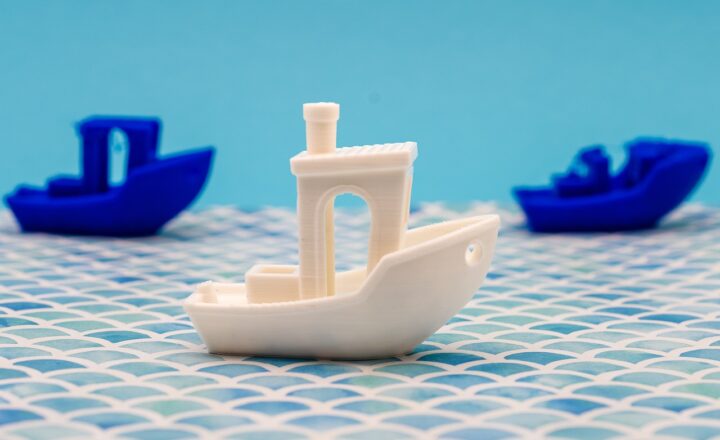Understanding Rigging in 3D Design: Tips for Beginners in Animation
November 13, 2024

3D animation has revolutionized the way we tell stories, create characters, and visualize concepts across various industries, from film and gaming to architecture and advertising. At the heart of this craft lies a critical process known as rigging. Understanding rigging is essential for anyone looking to delve deep into 3D animation, and it serves as the backbone that supports the movement of animated characters and objects. In this article, we will explore the world of rigging, diving into techniques, best practices, and tips for beginners eager to enhance their skills in animation.
1. What is Rigging in 3D Design?
Rigging is the process of creating a skeleton for a 3D model so that it can be manipulated and animated. This skeleton, known as a rig, consists of joints and bones that give structure to the model. Each joint is a pivotal point that controls the movement of the geometry attached to it. Without rigging, 3D models would remain static, unable to express emotion or engage in movement.
The primary goals of rigging are:
- Articulation: Allowing various parts of the model to move independently, mimicking realistic motion.
- Deformation: Ensuring that the mesh (the outer surface of the 3D model) deforms correctly when animated so that the character’s movements look natural.
- Control: Providing animators with controls to manipulate the model efficiently without affecting the underlying rig.
Rigging is not just about creating joints; it involves a deep understanding of anatomy, movement, and the principles of animation to bring characters to life.
2. Types of Rigging
There are several types of rigging used in 3D design, each serving different purposes depending on the complexity of the animation.
2.1. Skeleton Rigging
Skeleton rigging involves creating a basic hierarchical structure that mimics the human or animal skeleton. This type includes joints, bones, and parent-child relationships that dictate movement. It’s the most common rigging method found in character animation.
2.2. Facial Rigging
Facial rigging is essential for creating expressive characters. This involves adding controls for the face and mouth to facilitate emotions such as happiness, anger, or surprise. Shapes and sliders can be used to manipulate facial features for believable expressions.
2.3. Procedural Rigging
This type uses algorithms to automate rigging processes, often resulting in adaptive rigs that respond to movement. It’s frequently utilized in complex systems like crowds or creatures that react dynamically within a scene.
Understanding each type of rigging will help beginners choose the correct methods for their projects, ensuring that their animations look professional and lifelike.
3. Essential Tools for Rigging
For beginners in animation, a robust set of tools can simplify the rigging process. Here are some popular 3D modeling and rigging tools used in the industry:
- Autodesk Maya: A powerful software extensively used in the animation and entertainment industry, known for its comprehensive rigging features and advanced capabilities.
- Blender: An open-source 3D creation suite that offers exceptional rigging functionalities and is suitable for beginners and professionals alike.
- Cinema 4D: A user-friendly option that provides intuitive rigging tools and various integrations tailored for motion graphics.
- 3ds Max: Widely used for game design and film production, featuring a range of rigging and animation tools suited for different projects.
Learning how to navigate the selected software’s rigging features will provide a solid foundation on which to build your animation skills.
4. Key Techniques for Effective Rigging
Rigging can be a complex procedure, but several key techniques can help beginners enhance their workflow and produce compelling results:
4.1. Structure Your Rig Properly
Start with a well-organized skeleton. Proper hierarchy and naming conventions for joints and controls can significantly improve your rigging workflow. Use clear, descriptive names that indicate the function of each element.
4.2. Test Your Rig Regularly
After creating the rig, continually test its movements. Ensure joints rotate and bend as expected and that the mesh deforms naturally. Identify any potential issues early on, allowing you to fix them before adding further complexities.
4.3. Use Inverse Kinematics (IK)
Incorporate IK systems to ease the animation process. IK allows an animator to move a single control while the system calculates the positions of other joints automatically, resulting in more intuitive movements.
4.4. Implement Controls for Animators
Providing user-friendly control systems can dramatically speed up the animation process. Controls can include sliders and buttons to create intuitive access to key features without exposing all underlying complexity.
By mastering these techniques, beginners can create more effective rigs and streamline their animation process.
5. Common Mistakes to Avoid in Rigging
As a beginner in rigging, it’s essential to be mindful of common pitfalls that can hinder the quality of your work:
- Neglecting Realistic Movement: Always consider how the model is meant to move. Overly stiff or unrealistic rigs will limit the expressive capabilities of the characters and hinder the animation process.
- Skipping the Testing Phase: Don’t rush through rigging without thoroughly testing it. Bypassing this step can lead to unforeseen issues that arise later in animation, creating additional stress and errors during production.
- Poor Organization: Disorganized rigs can lead to confusion and inefficiency. Maintain a systematic approach to naming and organizing elements in the rig for easy navigation and function identification.
- Ignoring Animator Feedback: Communicate with animators to understand their needs and feedback about your rig. Understanding how they will use the rig can enhance usability and functionality, which will lead to better animations overall.
By avoiding these mistakes, beginners can set themselves up for success in rigging and animation.
Conclusion
Rigging is an indispensable component of 3D animation, transforming static models into living characters capable of conveying emotion and action. By grasping the fundamentals of rigging and applying the tips outlined in this article, beginners can enhance their skills and creativity in the animation process.
Take your time to explore different rigging methods, experiment with tools, and gather feedback to develop a proficient rigging technique. As you practice, you will find that rigging is a fluid art form that bridges creativity and functionality—key to bringing your animated visions to life.







